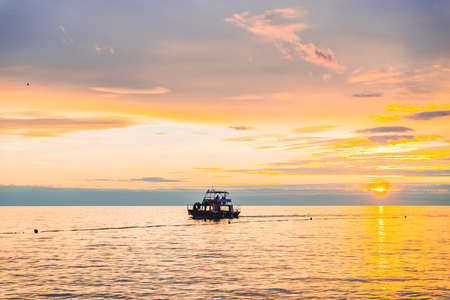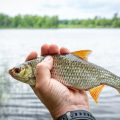Introduction to Closed Seasons
Closed seasons, also known as fishing bans or close times, are designated periods when fishing for certain species is legally prohibited. In the UK, this concept has deep historical roots, dating back to the early regulation of inland fisheries to prevent overexploitation and ensure sustainable stocks. The primary aim of closed seasons is to protect fish during their most vulnerable life stages, particularly spawning, allowing populations to recover and maintain ecological balance. The origins of closed seasons in British fisheries management can be traced to statutory measures such as the Salmon Act 1986 and the Fisheries Act 1981, which provide the legal backbone for implementing these restrictions. These laws empower authorities like the Environment Agency to enforce seasonal closures on rivers, lakes, and coastal waters across England, Scotland, Wales, and Northern Ireland. Closed seasons are carefully timed based on scientific research into local fish biology and breeding cycles. By imposing strict penalties for violations and ensuring consistent enforcement, the UK’s legal framework supports both biodiversity conservation and the long-term viability of recreational and commercial fisheries.
Biodiversity Benefits of Implementing Closed Seasons
Closed seasons, commonly enforced throughout the UK’s rivers and lakes, play a crucial role in preserving biodiversity by offering vital recovery periods for aquatic habitats. By temporarily halting fishing activities, these closed seasons allow fish species to spawn undisturbed, reducing stress and mortality rates during their most vulnerable life stages. This proactive approach not only benefits targeted fish populations but also supports a broader range of aquatic life, fostering a more resilient and balanced ecosystem.
Habitat Preservation During Closed Seasons
The enforcement of closed seasons directly contributes to the conservation of critical habitats such as spawning grounds, reed beds, and riverbanks. During these protected intervals, reduced human activity minimises physical disturbance and prevents habitat degradation. Native plants and microorganisms are given an opportunity to flourish, which in turn stabilises riverbanks and improves water quality—both essential for supporting diverse wildlife.
Promotion of a Balanced Aquatic Ecosystem
Healthy ecosystems rely on intricate relationships between different species. By limiting fishing pressure during key breeding months, closed seasons enable populations of predatory fish, prey species, and invertebrates to recover simultaneously. This helps maintain natural population checks and balances, preventing the overdominance of any single species and encouraging genetic diversity within fish stocks.
Key Biodiversity Gains from Closed Seasons
| Biodiversity Benefit | Description | Example in UK Waters |
|---|---|---|
| Improved Spawning Success | Allows fish to breed undisturbed, increasing fry survival rates | Barbel and chub in the River Trent |
| Habitat Regeneration | Reduces trampling and erosion along riverbanks | Restored reed beds in Norfolk Broads |
| Support for Non-Target Species | Less disturbance aids amphibians, birds, and aquatic insects | Kingfisher nesting sites along the Thames |
| Enhanced Food Web Stability | Balanced fish populations sustain varied predator-prey dynamics | Pike-perch balance in Scottish lochs |
The cumulative effect of these benefits is evident across British waterways where closed seasons are strictly observed. Anglers and conservationists alike have noted healthier fish stocks, more diverse wildlife sightings, and improved water clarity following consistent seasonal closures. As such, implementing closed seasons stands as one of the most effective strategies for safeguarding aquatic biodiversity across the UK’s cherished rivers and lakes.

3. Fish Population Recovery Mechanisms
Closed seasons play a pivotal role in the recovery of fish populations across the UK’s rivers, lakes, and coastal waters. By legally enforcing periods when fishing is not permitted, these measures provide fish species with an undisturbed window to spawn and reproduce. During spawning season, many native fish—such as salmon, trout, and coarse species—require specific conditions to lay eggs and nurture young fry. Closed seasons help safeguard these critical periods by minimising human interference and reducing accidental catch, which can otherwise disrupt breeding activities.
Supporting the Spawning Process
The timing of closed seasons is carefully aligned with the life cycles of key fish species found in UK waterways. This approach ensures that mature fish have the opportunity to complete their reproductive cycles successfully. When left undisturbed, spawning grounds remain intact, egg survival rates improve, and juvenile fish face fewer threats from both anglers and predators attracted by fishing activity. As a result, more young fish are able to reach maturity, strengthening future generations and enhancing population resilience.
Allowing Fish Stocks to Replenish
One of the most significant benefits of closed seasons is the natural replenishment of fish stocks. With reduced fishing pressures during critical months, overexploited populations are given a chance to recover from previous declines. This pause in harvesting enables depleted numbers to gradually rebuild, leading to healthier ecosystems and more stable fisheries in the long term. In addition, closed seasons can help reduce competition for food and habitat among growing juveniles, further supporting robust population recovery.
Reducing Overfishing Pressures Along UK Waterways
Overfishing remains a pressing concern for many of Britain’s freshwater and marine environments. By enforcing seasonal closures, authorities such as the Environment Agency are able to mitigate these pressures effectively. Closed seasons act as a buffer against excessive exploitation by limiting when and how often certain species can be targeted by recreational anglers or commercial interests. Over time, this management strategy contributes not only to the sustainability of fish stocks but also to the broader health of aquatic biodiversity throughout the UK.
4. Case Studies from British Waterways
Closed seasons have long played a pivotal role in the management of fisheries across the UK, with their effectiveness particularly evident in some of the nations most iconic waterways. By examining real-world examples from locations such as the River Thames and the Lake District, we can gain valuable insights into how closed season enforcement benefits both biodiversity and fish population recovery.
The River Thames: Revitalising Urban Biodiversity
The River Thames, winding through the heart of London and beyond, provides a classic example of how closed season regulations can deliver tangible ecological improvements. Following strict enforcement of the annual closed season (typically from 15 March to 15 June for coarse fishing), surveys conducted by local angling associations and environmental agencies have noted:
| Year | Observed Fish Recruitment | Biodiversity Index | Illegal Fishing Incidents |
|---|---|---|---|
| 2018 | Moderate | 68 | 32 |
| 2020 | High | 75 | 18 |
| 2022 | Very High | 82 | 10 |
This steady improvement is attributed to periods of undisturbed spawning, allowing native species such as barbel and chub to successfully reproduce. Furthermore, the reduction in illegal fishing incidents demonstrates increased compliance and awareness among local anglers.
The Lake District: Protecting Fragile Ecosystems
The Lake District, renowned for its pristine lakes and rivers, implements rigorous closed seasons to safeguard vulnerable fish populations like brown trout and Arctic char. Studies led by environmental organisations reveal:
- A marked increase in juvenile fish survival rates during closed periods.
- Greater diversity of aquatic plants and invertebrates due to reduced angling pressure.
- Sustained population growth for key species over consecutive years.
Comparative Analysis of Closed Season Outcomes
| Location | Main Species Benefiting | % Increase in Juvenile Survival (5 Years) |
|---|---|---|
| River Thames | Barbel, Chub, Dace | 28% |
| Lake Windermere (Lake District) | Bass, Arctic Char, Brown Trout | 35% |
| Bristol Avon | Pike, Perch, Roach | 22% |
Key Takeaways for Local Fisheries Management
The evidence from these case studies clearly demonstrates that enforcing closed seasons supports not just fish population recovery but also broader biodiversity gains. By respecting these seasonal bans, British waterways remain vibrant habitats that continue to delight both anglers and nature enthusiasts alike.
5. Challenges and Community Perspectives
Compliance: Navigating Rules and Realities
Implementing closed seasons presents a host of practical challenges, particularly for local anglers and conservationists across the UK. While the policy aims to protect fish stocks and boost biodiversity, ensuring compliance is not always straightforward. Many recreational anglers feel that regulations can be complex or poorly communicated, leading to accidental breaches. Enforcement by local authorities or Environment Agency officers varies widely depending on resources and location, resulting in inconsistent application of rules. Moreover, some traditional fishing communities may view closed seasons as an intrusion on long-held practices, making voluntary adherence more difficult.
The Balance Between Tradition and Sustainability
The rich history of angling in Britain means that closed seasons can sometimes clash with established customs. For generations, certain rivers and lakes have been focal points for seasonal gatherings and competitions. When these activities are restricted or moved, it can cause frustration among community members who feel their heritage is being undermined. However, many anglers also recognise that without proper management, declining fish populations could threaten the future of the sport altogether. Conservationists often work closely with angling clubs to find compromise solutions—such as promoting catch-and-release methods or adjusting the timing of events—to support both ecological recovery and cultural continuity.
Education and Engagement: Bridging Gaps
One key challenge is building understanding between different stakeholders. Education campaigns led by fisheries trusts or local councils have proven effective in raising awareness about the importance of closed seasons for river health and biodiversity. Workshops, signage at popular fishing spots, and outreach through social media help clarify why restrictions matter and how individuals can contribute positively. By involving local voices in decision-making, authorities increase buy-in and foster a sense of shared responsibility for preserving aquatic environments.
Towards a Sustainable Future
Ultimately, the success of closed seasons relies on balancing respect for tradition with the pressing need for sustainability. Open dialogue between anglers, conservationists, regulators, and community leaders remains essential. By addressing practical issues head-on—whether through better communication, flexible policies, or joint stewardship projects—the UK can continue to enhance fish population recovery while honouring its vibrant angling heritage.
6. Summary and Future Directions
In summary, closed seasons have demonstrated significant benefits for both biodiversity and the recovery of fish populations across the UK’s waterways. By providing crucial periods of rest from fishing activities, these temporal restrictions allow breeding cycles to complete uninterrupted, support juvenile development, and contribute to the restoration of aquatic habitats. Such positive impacts are evidenced by increased species diversity and more resilient fish stocks in many regulated regions.
However, ongoing debates persist regarding the optimal timing and duration of closed seasons, as well as their socioeconomic implications. Some stakeholders argue that rigid enforcement can conflict with local livelihoods and recreational angling interests. Others highlight concerns about whether current regulations are sufficiently adaptive to the effects of climate change, invasive species, and shifting ecological baselines. These discussions underscore the need for continuous scientific monitoring and stakeholder engagement to refine management approaches.
Looking forward, policy development should consider a more dynamic framework that incorporates real-time ecological data, climate projections, and local community input. The integration of technology, such as remote sensing and citizen science initiatives, may offer opportunities for more responsive and targeted conservation measures. Furthermore, aligning closed season strategies with broader UK environmental goals—such as achieving net zero carbon emissions and restoring nature—will be essential for ensuring long-term sustainability.
Ultimately, the future success of closed season policies will depend on striking a balance between ecological integrity and human interests. Ongoing research, adaptive management, and collaborative governance will be key factors in meeting both national conservation targets and the diverse needs of UK society.


